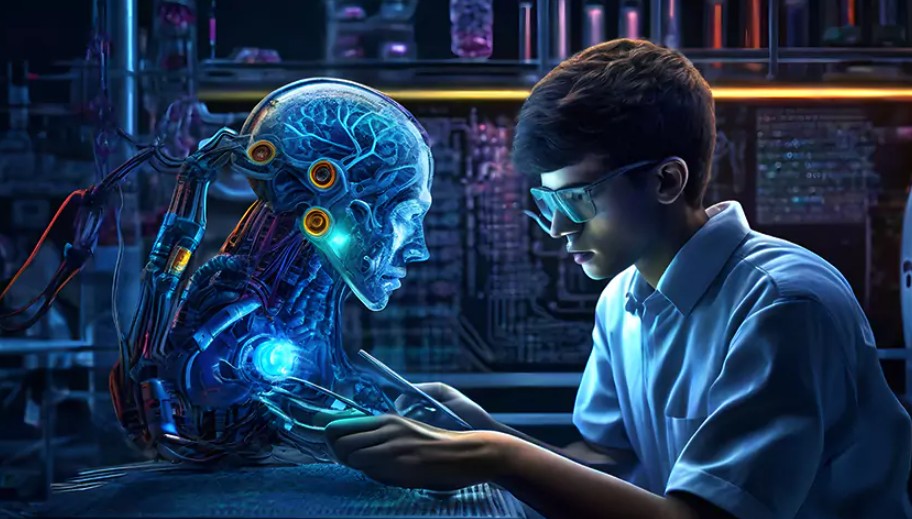Artificial Intelligence (AI) has rapidly evolved, and one of its most significant advancements is the Transformer model. This deep learning architecture has revolutionised natural language processing (NLP), enabling sophisticated AI applications like ChatGPT, BERT, and DALL·E. If you’re looking to master generative AI, understanding transformers is crucial. Enrolling in an AI course in Bangalore can help you explore how transformers work, their applications, and why they have become a fundamental part of AI-driven innovation.
What Are Transformers?
Transformers are a type of neural network architecture designed to process sequential data more efficiently than traditional recurrent neural networks (RNNs) or long short-term memory (LSTM) networks. Introduced in the groundbreaking paper Attention Is All You Need by Vaswani et al. in 2017, transformers leverage self-attention mechanisms to analyse input sequences holistically. Studying these mechanisms in an AI course in Bangalore allows students to understand how transformers handle large-scale text generation and language modelling tasks.
The Self-Attention Mechanism
A key feature of transformers is the self-attention mechanism, which enables the model to weigh the importance of different words in a sequence. Unlike RNNs, which process data sequentially, transformers analyse entire input sequences simultaneously. This parallel processing makes transformers significantly more efficient. If you enroll in an AI course in Bangalore, you’ll get hands-on experience with self-attention and understanding of how it improves contextual understanding and language coherence.
Why Transformers Are Superior to RNNs and LSTMs?
Before transformers, RNNs and LSTMs dominated sequence processing tasks; however, these models struggled with long-range dependencies and suffered from issues like vanishing gradients. Transformers solve these problems by eliminating recurrence and leveraging positional encoding. As part of a generative AI course, students learn about these advantages through practical case studies, exploring how transformers outperform traditional models in NLP tasks.
The Role of Transformers in Generative AI
Generative AI heavily relies on transformers, including text, image, and speech generation. Models like GPT-4 and BERT use transformers to generate human-like text, while Stable Diffusion applies similar principles to create high-quality images. In a generative AI course, learners study how transformers power state-of-the-art AI applications, gaining the skills to build their own generative AI models.
Transformers in Language Models: GPT, BERT, and More
Several leading AI models are built on transformer architecture:
- GPT (Generative Pre-trained Transformer): Powers conversational AI and content generation.
- BERT (Bidirectional Encoder Representations from Transformers): Enhances search engines and question-answering systems.
- T5 (Text-to-Text Transfer Transformer): Converts text-based tasks into a single framework.
Understanding these models through a generative AI course helps students grasp their real-world applications and implementation techniques.
Applications of Transformers in AI
Transformers extend beyond text-based tasks and are used in various AI applications, such as:
- Machine Translation (e.g., Google Translate)
- Speech Recognition (e.g., Whisper by OpenAI)
- Image Generation (e.g., DALL·E, MidJourney)
- Biomedical Research (e.g., Protein folding with AlphaFold)
A structured curriculum in an AI course in Bangalore covers these applications, demonstrating how transformers impact multiple industries.
Training Transformers: Challenges and Solutions
Despite their advantages, transformers are computationally expensive and require large datasets. Training models like GPT-4 involve billions of parameters and challenging optimisation. However, transfer learning and model distillation help reduce costs and improve efficiency. In an AI course in Bangalore, students explore these training techniques, gaining insights into optimising transformer-based models for real-world applications.
Practical Hands-on Experience with Transformers
A theoretical understanding of transformers is not enough; practical implementation is crucial. By enrolling in an AI course in Bangalore, students gain hands-on experience with frameworks like TensorFlow and PyTorch, implementing and fine-tuning transformer models for various tasks.
Future of Transformers in AI
The future of AI is deeply connected to transformers. Research inefficient transformers, multi-modal AI, and self-supervised learning continue pushing the boundaries of AI capabilities. Keeping up with these advancements through an AI course in Bangalore ensures that aspiring AI professionals stay ahead in this rapidly evolving field.
Conclusion
Transformers have transformed AI, making generative AI more powerful and accessible. Their ability to handle complex language and vision tasks has paved the way for groundbreaking AI applications. If you’re interested in mastering this technology, enrolling in an AI course in Bangalore is the perfect way to develop your skills, gain industry insights, and build your generative AI models.
For more details visit us:
Name: ExcelR – Data Science, Generative AI, Artificial Intelligence Course in Bangalore
Address: Unit No. T-2 4th Floor, Raja Ikon Sy, No.89/1 Munnekolala, Village, Marathahalli – Sarjapur Outer Ring Rd, above Yes Bank, Marathahalli, Bengaluru, Karnataka 560037
Phone: 087929 28623
Email: enquiry@excelr.com
